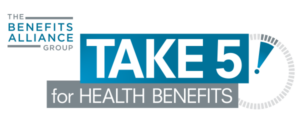The pandemic is painting an increasingly complex picture of consumer debt in Canada—which suggests the time is right, more than ever, for employers to encourage employees to have a tax-free savings account (TFSA).
Better yet, set up a TFSA contribution plan. “The beauty of it is that it can be managed through payroll deduction, same as for RRSP contributions,” says Jeff McCanna, senior group benefits and savings consultant, Owens MacFadyen Group and a member of the Benefits Alliance Group’s retirement savings committee.
Before COVID-19, TFSAs were likely promoted as a great way to save for short-term objectives, such as a new car, home renovations or a vacation. While that still holds true, creating awareness of the TFSA’s value as a safety net needs to come to the forefront.
“One thing that became very clear during this past year is that too many employees don’t have an emergency fund,” notes McCanna. “The TFSA gives people something to fall back on if there is an unexpected event, such as a family medical emergency. Or in case something like COVID were to ever happen again.”
Even well before the pandemic, 48% of Canadians were $200 or less away from insolvency, according to a SURVEY conducted in March 2019 by Ipsos on behalf of insolvency firm MNP Ltd. The LATEST RESULTS from the quarterly Ipsos-MNP survey, based on polling done in December 2020, found that 28% of Canadians have taken on more debt as a direct result of the pandemic. Forty-three percent do not believe they can cover their living expenses for the next year without taking on more debt, and only 29% are confident in their ability to cope with life-changing events without increasing their debt.
On the other hand, with interest rates at all-time lows, 61% feel now is a good time to buy things they may not otherwise be able to afford. Nearly half (47%) say they’re more relaxed about carrying debt—yet an equal number (47%) say they could end up in financial trouble if interest rates reverse course.
These wide-ranging results underscore the need for savings, and the TFSA is an ideal vehicle since the savings can be invested and interest earned is non-taxable, says McCanna.
However, given Canadians’ complex views on debt, the ability to save could seem out of reach. That’s where employers can show their value by enabling payroll deductions so that savings can automatically build in small, manageable amounts. “It doesn’t cost the employer anything to offer a TFSA plan. Just get your advisor to add it on to your retirement savings options,” says McCanna.
Once in place, regular communications are critical for uptake. McCanna is currently working with an employer with 25 employees to promote the value of TFSAs. “They had a TFSA plan for two years, but no one used it. We’ve put in a communications plan, including virtual education sessions, and the messaging around being prepared in the case of an emergency appears to be working. And it’s so important for employers to regularly remind people that the TFSA is available and can be managed through payroll deductions.”
 This article is part of The Benefits Alliance Take 5 for Health Benefits. Take 5 is a quarterly initiative that provides a deeper look a the employee benefits space by providing examples, research and case studies on what’s working for employers in Canada.
This article is part of The Benefits Alliance Take 5 for Health Benefits. Take 5 is a quarterly initiative that provides a deeper look a the employee benefits space by providing examples, research and case studies on what’s working for employers in Canada.
